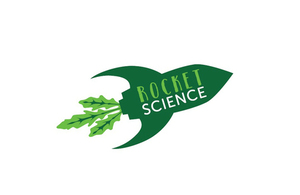Rocket Scientists
PROJECT: Make and launch rockets
GOAL:To discover what combination of factors will make a rocket fly farthest
 With seltzer-tablet rockets, your kids will learn about gas, the most mysterious of the three phases of matter. This experiment makes clear that though gas is usually invisible, it can exert force. The chemical reaction between water and the sodium bicarbonate in the seltzer tabs releases carbon dioxide gas inside the film canister. Pressure builds until the lid is forced off, launching the rockets.
With seltzer-tablet rockets, your kids will learn about gas, the most mysterious of the three phases of matter. This experiment makes clear that though gas is usually invisible, it can exert force. The chemical reaction between water and the sodium bicarbonate in the seltzer tabs releases carbon dioxide gas inside the film canister. Pressure builds until the lid is forced off, launching the rockets.
 By experimenting with the amount or temperature of the water used, kids discover which combined factors produce the most gas molecules or affect the rate of reaction. Be sure that they steer clear of anything hotter than tap water because the force caused by very high temperatures can pose a safety hazard.
By experimenting with the amount or temperature of the water used, kids discover which combined factors produce the most gas molecules or affect the rate of reaction. Be sure that they steer clear of anything hotter than tap water because the force caused by very high temperatures can pose a safety hazard.
Empty toilet paper roll
Clean, empty Styrofoam meat tray
Plastic mailing tape
Goggles or other eye protection
Water
Measuring cup
Clear film canisters with lids that fit inside the container (available at any store that develops film, Fuji makes the best kind)
Antacid seltzer tablets, broken into fourths (never substitute vinegar and baking soda; they react too fast)
Plastic plate
Popsicle sticks or pencils
A tape measure or yardstick
 Make a launchpad by cutting five 1-inch slits in the bottom of the toilet paper roll. Spread open these tabs and tape them to the Styrofoam meat tray. Now it’s time to determine the optimal amount of water needed to send the rocket flying (it’s also time for everyone to put on their protective goggles). The actual experimenting is best done outside or in a basement or garage. Fill the measuring cup with water and pour some into the canister until it’s about 3/4 full. Drop in a piece of antacid tablet, pop on the lid, invert the canister and place it on a plate. (Remind participants not to put their face over the plate.) It can take anywhere from 15 seconds to a minute for the rocket to take off. Follow the same procedure two more times, changing only the amount of water used. Fill the canister half full once and a quarter full another time. Notice which amount of water shoots the rocket farthest. Older children can experiment with water temperature, too. You and your crew now know how much water you need to boost a rocket–time to dust off the launchpad. Prepare the rocket for liftoff, but this time place it upside down inside the toilet paper roll. Tilt the launchpad: The idea is to find an angle that sends your capsule into outer orbit. With Popsicle sticks or pencils, mark the starting point of each flight and where the rocket lands, then measure the distance traveled. (After 15 to 20 flights, seltzer-tablet rockets start to leak. Be ready to continue experimenting with a replacement.) Try having a contest to see whose missile flies farthest.
Make a launchpad by cutting five 1-inch slits in the bottom of the toilet paper roll. Spread open these tabs and tape them to the Styrofoam meat tray. Now it’s time to determine the optimal amount of water needed to send the rocket flying (it’s also time for everyone to put on their protective goggles). The actual experimenting is best done outside or in a basement or garage. Fill the measuring cup with water and pour some into the canister until it’s about 3/4 full. Drop in a piece of antacid tablet, pop on the lid, invert the canister and place it on a plate. (Remind participants not to put their face over the plate.) It can take anywhere from 15 seconds to a minute for the rocket to take off. Follow the same procedure two more times, changing only the amount of water used. Fill the canister half full once and a quarter full another time. Notice which amount of water shoots the rocket farthest. Older children can experiment with water temperature, too. You and your crew now know how much water you need to boost a rocket–time to dust off the launchpad. Prepare the rocket for liftoff, but this time place it upside down inside the toilet paper roll. Tilt the launchpad: The idea is to find an angle that sends your capsule into outer orbit. With Popsicle sticks or pencils, mark the starting point of each flight and where the rocket lands, then measure the distance traveled. (After 15 to 20 flights, seltzer-tablet rockets start to leak. Be ready to continue experimenting with a replacement.) Try having a contest to see whose missile flies farthest.






